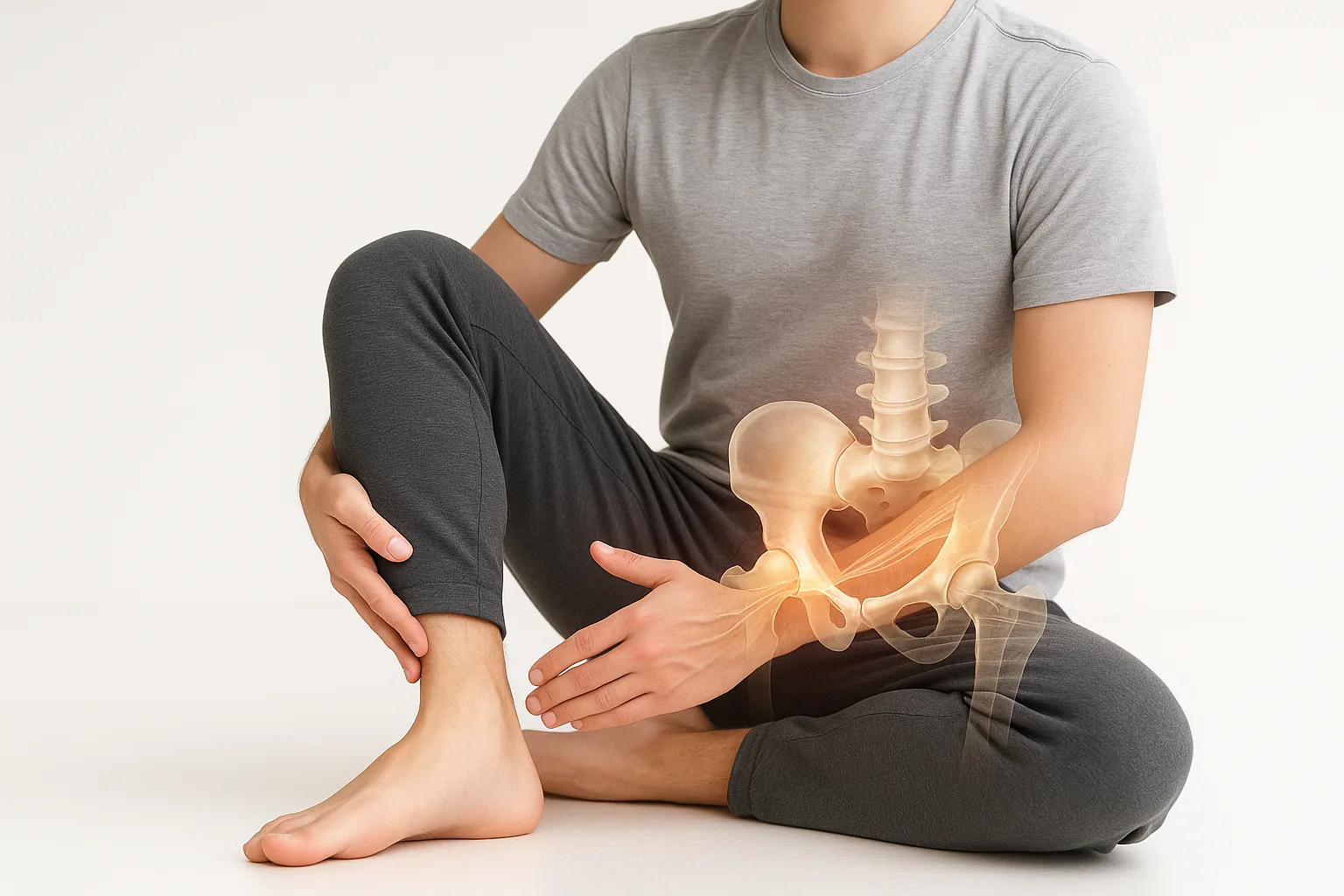The hip rotation mobility test reveals how your pelvis and hip joints still carry the evolutionary adaptations that allowed humans to walk upright. Unlike most primates, humans have a uniquely shaped pelvis that supports bipedal locomotion, balance and endurance walking. This structure evolved gradually as early human ancestors moved from tree-based movement to ground-based travel.
Even though modern humans spend more time sitting than walking long distances, the evolutionary design of the hips remains. This experiment shows how your hip rotation patterns reflect the anatomy shaped by millions of years of adaptation.
Below is the complete hip rotation mobility test.
Step 1 — Sit on the Floor With Both Legs Extended Straight
Keep your spine neutral and legs relaxed.
Why this matters
This position exposes your natural hip rotation without muscular compensation.
Step 2 — Rotate Both Feet Outward Gently
Let your feet fall open to the sides.
What happens
This movement reveals external hip rotation mobility.
Why
Humans evolved wide external rotation to support upright walking.
Step 3 — Rotate Both Feet Inward Slightly
Turn your feet so they point toward each other.
What changes
You engage internal hip rotation, which varies widely among individuals.
Why
Internal rotation reflects deep structural differences in pelvic anatomy.
Step 4 — Bend One Knee and Place the Foot on the Floor
Bring your right foot up while keeping the left leg extended.
Why
This isolates hip rotation on one side.

Step 5 — Drop the Bent Knee Gently Toward the Floor
Let gravity assist the movement.
What happens
This reveals external rotation capability.
Why
External rotation plays a major role in human gait stability.
Step 6 — Lift the Bent Knee Toward the Center of Your Body
Bring the knee inward slowly.
What changes
This tests internal rotation of the hip joint.
Why
Internal rotation was crucial for balancing during early bipedal movement.
Step 7 — Switch to the Other Leg and Repeat
Perform the same inward and outward rotations with the other hip.
What you’ll notice
One side may be more mobile or more restricted.
Why
Evolutionary changes, lifestyle habits and asymmetrical movement patterns all influence hip mobility.
Step 8 — Try Rotating Both Hips While Lying on Your Back
Lie down, bend your knees and keep your feet flat.
What happens
This reduces spine involvement and exposes pure hip rotation.
Why
It isolates evolutionary hip mechanics more clearly.
Step 9 — Stand Up and Perform a Gentle Hip Pivot
Stand with feet shoulder-width apart.
Rotate your pelvis left and right smoothly.
What changes
You feel how the hips stabilize the torso during movement.
Why
Early humans relied on these mechanics for running and endurance walking.
Step 10 — What This Evolutionary Structure Reveals About You
The hip rotation mobility test highlights seven essential evolutionary insights:
1. Human hips evolved for bipedal locomotion
Your pelvis supports upright posture and efficient walking.
2. External rotation helps stabilize each step
This rotation prevents collapse during weight transfer.
3. Internal rotation controls balance
Vital for turning, climbing and adapting to uneven terrain.
4. Hip shape varies across populations
Different environments influenced pelvic structure.
5. Wide pelvis supports childbirth
Human evolution balanced walking efficiency with reproductive demands.
6. Hip rotation affects modern posture and gait
The ancient mechanics still guide how you sit, stand and walk.
7. Evolution leaves deep structural signatures
Your pelvis remains one of the strongest pieces of evidence for human evolution.
The hip rotation mobility test demonstrates how your everyday movements still reflect millions of years of adaptation — from tree-dwelling primates to upright-walking humans.
Next Evolution Experiment You Should Try
If the hip rotation mobility test revealed how your pelvis carries evolutionary adaptations, the next experiment takes you even deeper into the hidden mechanics of ancient human locomotion.
Recommended next article:
“The Achilles Tendon Spring Test — A Legacy of Early Human Running”
